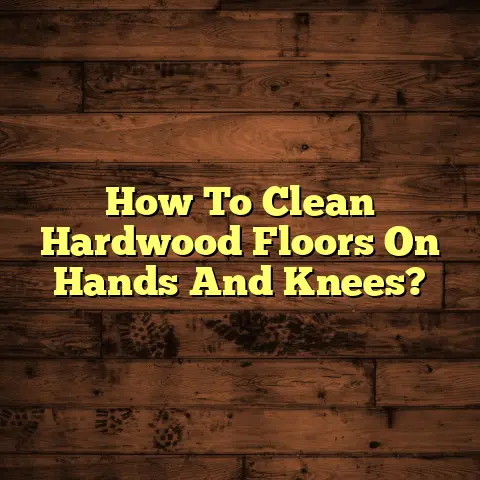Is Laminate Flooring Stuck Down? (1 Install Mistake!)
I’ve seen it all, trust me. And today, I want to talk about a sneaky problem that can turn your dream laminate floor into a total nightmare: getting it stuck down when it’s not supposed to be!
It sounds simple, right? But believe me, this one install mistake can lead to a cascade of issues that will have you pulling your hair out. Let’s dive in, shall we?
Section 1: Understanding Laminate Flooring
So, what exactly is laminate flooring? Well, think of it as a clever imposter. It mimics the look of real wood, stone, or tile, but it’s actually a multi-layered synthetic product.
Here’s the breakdown:
-
Wear Layer: The tough, transparent top layer that protects against scratches, stains, and fading.
-
Decorative Layer: This is the pretty part! A high-resolution image that gives the laminate its realistic appearance.
-
Core Layer: Usually made of high-density fiberboard (HDF) or medium-density fiberboard (MDF). This provides stability and impact resistance.
-
Backing Layer: The bottom layer that provides moisture resistance and balances the plank.
Why do people love laminate? A few key reasons:
- Cost-Effective: It’s way cheaper than hardwood or natural stone.
- Durable: Can withstand a lot of foot traffic, kids, and pets.
- Easy to Install: DIY-friendly, especially the click-lock systems.
- Versatile: Comes in a huge range of styles and colors.
Now, how does it stack up against other flooring types?
| Flooring Type | Cost | Durability | Installation | Moisture Resistance |
|---|---|---|---|---|
| Laminate | Low | Medium | Easy | Moderate |
| Hardwood | High | High | Difficult | Low |
| Vinyl | Medium | High | Easy | High |
| Tile | Medium | High | Difficult | High |
You can see that laminate strikes a nice balance between cost, durability, and ease of installation. But remember, improper install can ruin all these good benefits.
Section 2: The Installation Process of Laminate Flooring
Alright, let’s talk about how to actually install this stuff. Here’s the general process:
-
Preparation is Key: Clear the room, remove the old flooring, and ensure the subfloor is clean, level, and dry. This is HUGE, folks. Don’t skip this step! A clean and level subfloor prevents future issues like unevenness or squeaking.
-
Underlayment: This goes between the subfloor and the laminate. It provides cushioning, sound insulation, and moisture protection. I usually recommend a 3mm underlayment for most applications.
-
Acclimation: This is where a lot of people mess up! You need to let the laminate planks sit in the room for at least 48-72 hours before installation. This allows them to adjust to the room’s temperature and humidity.
-
Laying the Planks: Start in a corner and work your way across the room, using spacers to maintain an expansion gap around the perimeter.
-
Cutting and Fitting: Use a saw (circular saw, jigsaw, or laminate cutter) to cut planks to fit around doorways, corners, and other obstacles.
-
Finishing Touches: Install baseboards and trim to cover the expansion gaps and give the floor a finished look.
Speaking of acclimation, let’s talk about temperature and humidity. Laminate expands and contracts with changes in these conditions. If you install it without acclimating, it can buckle or warp later on.
Ideally, you want the room temperature to be between 65-75°F (18-24°C) and the relative humidity to be between 30-60% during acclimation and installation.
What tools do you need? Here’s my go-to list:
- Measuring tape
- Pencil
- Circular saw, jigsaw, or laminate cutter
- Tapping block and pull bar
- Spacers
- Hammer
- Safety glasses
- Knee pads (trust me, your knees will thank you!)
Section 3: The Critical Install Mistake
Okay, here it is – the big one! The install mistake that can lead to your laminate flooring being stuck down: using adhesive or failing to leave adequate expansion gaps.
I know, it sounds simple, but you’d be surprised how often this happens. People get impatient, they think a little glue will help hold things in place, or they just don’t understand the importance of expansion gaps.
Laminate flooring is designed to “float.” It’s not supposed to be glued or nailed to the subfloor. It needs room to expand and contract with changes in temperature and humidity.
When you use adhesive, you’re essentially locking the laminate in place. When it tries to expand, it has nowhere to go, and it will buckle, warp, or even crack.
And those expansion gaps? They’re your floor’s breathing room! They allow the laminate to move freely without putting pressure on the walls or other fixed objects.
I’ve seen this happen so many times. Here’s one example that sticks out in my mind:
I got a call from a homeowner who had installed laminate flooring in their basement. They used construction adhesive in a few spots where the floor was uneven, thinking it would help.
Within a few weeks, the floor started buckling and warping. The homeowner was furious! They had to tear up the entire floor and start over, costing them a ton of time and money.
Another common scenario: people install laminate flooring tight against the walls, without leaving any expansion gaps. During the summer months, when the humidity is high, the floor expands and pushes against the walls. This can cause the floor to buckle in the middle of the room.
Section 4: Consequences of an Improper Installation
So, what happens when you make this mistake? Let me paint you a picture:
- Buckling: The floor starts to rise up in the middle, creating unsightly bumps.
- Warping: The planks become uneven and distorted.
- Cracking: The laminate can crack under pressure, especially in high-traffic areas.
- Squeaking: The floor can start to squeak as the planks rub against each other.
- Difficulty in Removal or Repair: If you need to replace a damaged plank, it will be much harder to do if the floor is glued down.
Moisture can make these problems even worse. If water gets under the laminate, it can cause the core layer to swell, leading to even more buckling and warping.
This is especially true in areas with high humidity, like bathrooms, kitchens, and basements.
Ignoring these installation errors can have serious long-term implications. Not only will it affect the appearance and functionality of your floor, but it can also decrease your home’s value.
According to a 2023 report by the National Association of Realtors, homes with poorly installed flooring sell for an average of 5-10% less than comparable homes with properly installed flooring. I have personally seen homes with bad flooring sit longer in the market.
And let’s not forget about the financial costs. Replacing a poorly installed laminate floor can cost thousands of dollars, not to mention the hassle and inconvenience.
Section 5: Identifying the Signs of Installation Issues
Okay, so how do you know if your laminate flooring is improperly installed or stuck down? Here are some telltale signs:
- Buckling or Warping: As we discussed, this is a major red flag.
- Squeaking: Listen for squeaks when you walk across the floor.
- Gaps Between Planks: This can indicate that the floor is shrinking or expanding unevenly.
- Visible Adhesive: Check around the edges of the floor for signs of glue or adhesive.
- Tight Fit Against Walls: If the floor is butted up against the walls without any expansion gaps, that’s a problem.
- Uneven Surface: Run your hand across the floor and feel for any bumps or dips.
To perform a visual inspection, get down on your hands and knees and take a close look at the floor. Pay attention to the edges, corners, and areas where the floor meets doorways or other obstacles.
For a tactile inspection, walk across the floor barefoot and feel for any unevenness or soft spots.
Regular maintenance is also key. Sweep or vacuum the floor regularly to remove dirt and debris. Wipe up spills immediately to prevent moisture damage.
I recommend checking your floor every few months for any signs of problems. The sooner you catch an issue, the easier it will be to fix.
Section 6: Solutions and Remediation
Alright, so you’ve discovered that your laminate flooring is stuck down. Now what?
Unfortunately, there’s no easy fix. If the floor is glued down, you’ll likely have to tear it up and start over.
However, this is a delicate process, and you could end up damaging the floor if you’re not careful.
In most cases, it’s best to call in a professional. A qualified flooring contractor can assess the situation and recommend the best course of action.
When you’re looking for a contractor, be sure to ask these questions:
- Are you licensed and insured?
- How much experience do you have installing laminate flooring?
- Can you provide references from previous clients?
- What is your process for addressing installation errors?
- What is your warranty on your work?
Expect to pay a premium for professional help, but it’s often worth it to avoid making the problem worse.
According to HomeAdvisor, the average cost to repair laminate flooring is between \$200 and \$800, depending on the extent of the damage.
Conclusion: The Importance of Proper Installation
So, there you have it! The critical install mistake that can lead to your laminate flooring being stuck down: using adhesive or failing to leave adequate expansion gaps.
I hope this article has shed some light on the importance of careful installation and awareness of laminate flooring characteristics.
Remember, laminate flooring is a great option for many homes, but it’s not foolproof. Proper installation is essential to ensure that your floor looks great and lasts for years to come.
If you’re unsure about your DIY capabilities, don’t hesitate to call in a professional. It’s better to spend a little extra money upfront than to deal with the headache and expense of repairing a poorly installed floor.
Do your research, take your time, and follow the manufacturer’s instructions carefully. Your floors will thank you for it!





